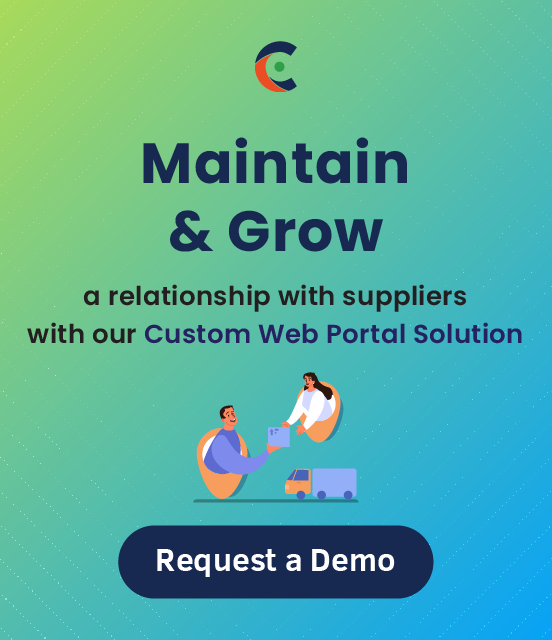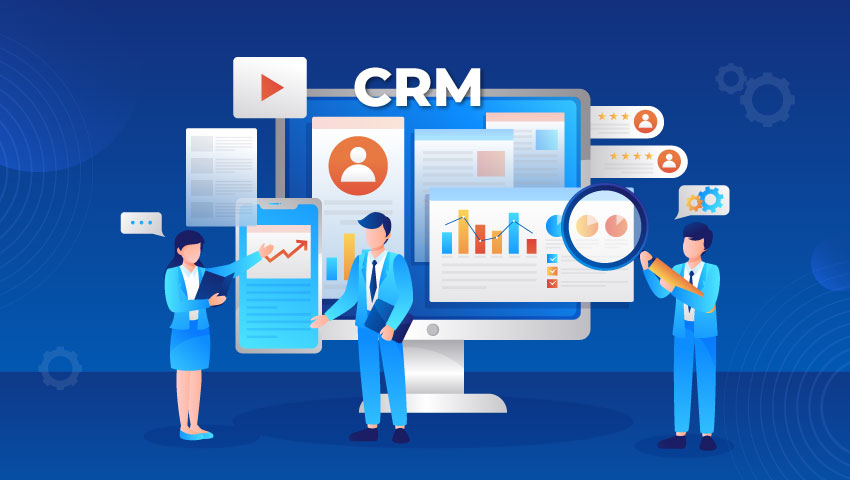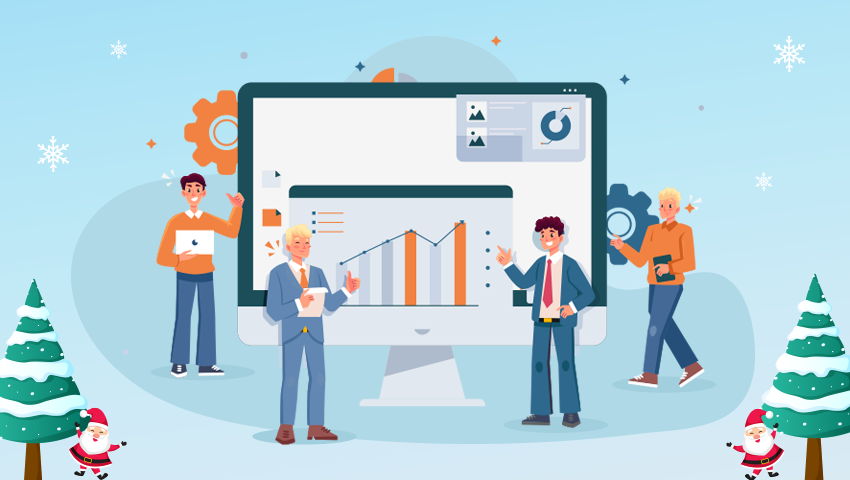A web portal is the need of the hour, and all businesses are looking for a web portal to streamline their business operations. With a web portal for your business, it becomes easy to manage different stakeholders, including customers, vendors, or partners, etc.
However, creating a web portal is no child’s play. You can’t just think one day that you need a web portal and launch it the other day. Nope, it isn’t that easy. You need the right approach, strategy, tips, and of course – technology, to build it.
Cutting corners while building a web portal may render your portal useless. So, always ensure that you follow proper steps and tips to get yourself the right portal for your business.
If you are also interested in creating a web portal that fits your purpose, here’s your guide to that. This post will help you understand the right tips and strategies to consider while developing your web portal.
So, here we go.
Things to Consider While Developing a Web Portal
1. Consider Your Niche, Clients’ Requirements, and Budget
The first thing to consider is the business niche and decide whether to build a B2B portal, B2C portal, or a hybrid portal. Also decide on whether you want to serve only domestic markets or both domestic and international markets.
Ideally, your portal is likely to succeed more if it serves both domestic and international users. However, remember that a portal for a global audience will require you to invest more. This is because you may need to include features like multi-language support, geolocation-based redirection, role-based access to user groups, etc., to enhance users’ experience.
Focus on your target customers’ expectations and how you want your portal to fulfill them. Decide on the range of functionalities you want to provide to your customers or other users with your portal.
You can also think of building your portal as just an extension of your CRM to support users or as a full-fledged separate website to enable online shopping, making payments, or more. Accordingly, you can offer products, services, customer support, etc. to your portal users.
All these factors will help you decide on the right budget for your portal. While deciding on the budget, you may also need to consider the budget you would need for advertising your portal. Ensure that you have formed a budget, keeping in mind the factor of maximum profitability and ROI.
2. Decide on the Right Technology
There are several web programming technologies available to create web portals today. While some of these web technologies are proprietary platforms, some others are open source. While enterprises prefer proprietary platforms due to better security, small and medium businesses generally prefer open-source platforms for easy and cost-effective development.
The platform you choose depends on your portal’s nature and content management requirements. Some of the popular PHP-based open-source platforms that businesses pick are WordPress, Drupal, and Joomla.
Sometimes, web developers use core PHP code to create a web portal and integrate an open-source CMS to update and manage the content. This helps them bypass the platform’s constraints and customize the content as per their requirements.
Considering the following factors can help you create a web portal:
- The platform should be developer-friendly and user-friendly.
- It should be scalable enough to adopt any level of intricacy in development.
- It should be cost-effective.
Keep in mind that the portal you develop is highly functional and fulfills all your business requirements.
3. Conduct Front-End Development and Back-End Development
Once you have picked the right platform, the next step is to focus on front-end and back-end development. And this is an important step that you need to pay extra attention to. Though features differ from business to business and as per requirements, there are some common front-end and back-end features.
A. Front-End Features
- Secure LoginYour portal should provide a single and secure login to the customers. A new user should be able to sign-up directly from the portal. A single log-in should provide the user with access to both their WordPress account and the portal.
- Support for Default and Custom CRM ModulesThe portal should support all the default modules from CRM. It should also enable custom modules in the CRM with a relationship with the Contact module.
- Case DeflectionYour portal should allow users to search the query first instead of raising a ticket or adding a case. This feature will help accelerate the support system, reduce the burden on your support team and enhance your users’ experience.
- Proposal GenerationThe portal should let users generate proposals in the portal. It should offer product catalogs for users to pick the products from, choose the quantity, and send proposals to the admin. It should also allow a quick search of products not present in the catalog and request unlisted products.
- Custom DashboardCustomers should have the freedom to customize the appearance of the portal. Allow your customers to pick the modules they want to see on their portal dashboard.
- Real-Time NotificationsCustomers should get real-time notifications about the latest actions the admin performs. They should view the new records or attachments the admin adds, filter notification preferences by type of notification, pick any module, etc.
- Multi-Language SupportYour portal should provide support for multiple languages to serve your global customers better. There should be a provision to select languages and add messages in a specific language from the backend to engage users.
- Knowledge BaseYour customers should have access to a knowledge base containing informative videos, blogs, FAQs, and more.
B. Backend Features
- Role-Based AccessYour portal should restrict the access to specific modules to specific customers. The rights should be on the “need to access” basis.
- Generation of Mass CredentialsThe admin should enable the generation of mass credentials in the CRM, pull these records, and export them in a CSV file. You can also email these credentials in bulk to the users.
- Configuration of Custom ModulesYour portal should allow the configuration of custom modules in the portal backend already there in CRM without any expenses.
- Dynamic LayoutsYour portal should enable and arrange fields and layouts in modules you want to appear in your portal. Data entry from the portal into CRM should be real-time.
4. Test Your Portal
Once you have created the portal, completed the front-end and back-end development, the next step is to test your portal. There are a few things you should test to make it to ascertain that it is market-ready.
See to it that your portal:
- Works uniformly across different browsers.
- Is easily accessible and readable.
- Is mobile-friendly.
If you find any bugs, fix them with the help of automated tools or manually as required. When you complete your portal, fix bugs, run a final check. If you find everything fine, run the portal.
5. Market Your Portal
The portal is ready. What next? It is time to promote and market your portal. If you don’t let your customer know that you have a portal now, how will they use it? That is why promoting your portal is as important as creating it.
Without proper promotion and visibility, your portal won’t serve the purpose you’ve built it for. Highlight your portal’s launch on your website and email to your subscribers and customers about that. You can also hire marketing experts and apply digital marketing strategies to redirect more customers to your portal.
Summing Up
A web portal is the future of online businesses, and it is time you built one for your business. Without a portal, it is very difficult to keep up with the pace of advancing technology and the upliftment of customer experience.
If you are looking for a web portal solution, we can help you with that. Our SuiteCRM customer portal is a ready-to-integrate portal solution that you can use to build your portal. It features secure access to CRM data, robust ticket management, advanced knowledge base options, access to unlimited customers, support for default and custom modules.
Our SuiteCRM client portal is a highly scalable solution that you can also customize to fit your business requirements. We also provide custom portal development solution service in case you want your portal exclusively for your business.
So, let’s join hands to get you a next-gen web portal for your business.
All product and company names are trademarks™, registered® or copyright© trademarks of their respective holders. Use of them does not imply any affiliation with or endorsement by them.




